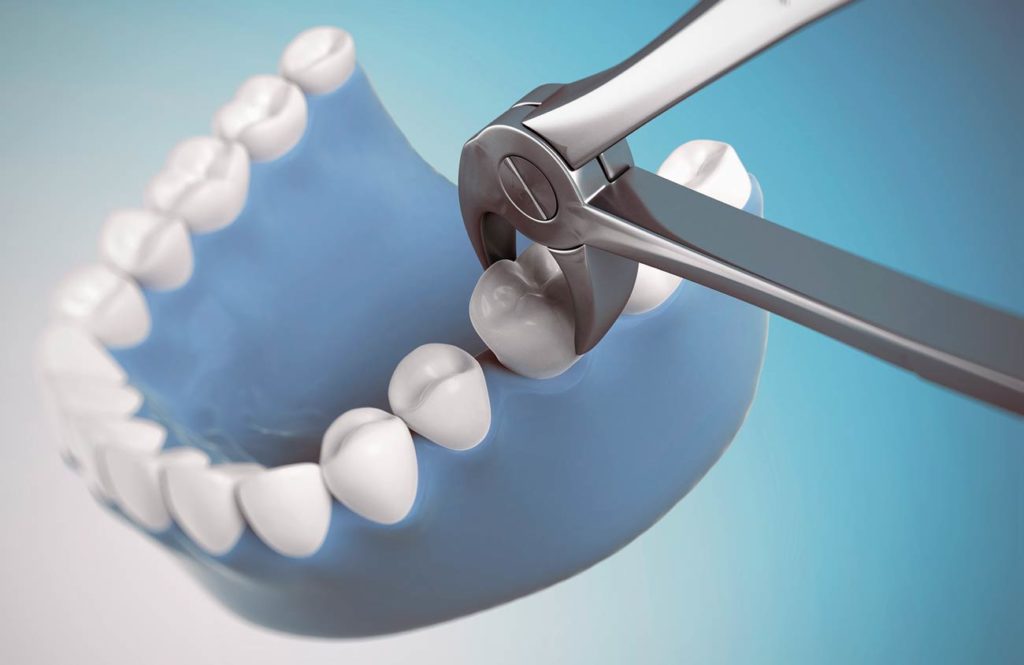We are often asked by parents if their child will require tooth removals as part of their overall orthodontic treatment plan. This is a very important question, but there is never a ‘one size fits all’ response.
Every patient who walks into an orthodontist’s office is unique. Thanks to our genes and the many external factors that impact on our development, we all experience dental and facial growth in different ways, and those requiring corrective orthodontics will need treatment that has been fully customised to their individual needs. When planning this treatment, the recommendation to extract teeth is never made lightly, and there will always be a small percentage of cases where orthodontic extractions are necessary to achieve the best results. In orthodontics, treating every single person without extractions is simply not possible.
However, for most orthodontic practices, the number of patients who require extractions is generally quite low – probably 10-20% depending on the demographics of the practice.
What is a tooth extraction?
Tooth extraction is the act of removing a permanent (adult) or deciduous (baby) tooth by a general dentist or oral surgeon. Generally, when a child’s deciduous tooth is naturally lost or pulled out, a permanent tooth will eventually come through in its place to be its permanent successor. However, when an adult tooth is extracted, there is no further successor, leaving a space where the tooth was removed as nothing emerges to fill the gap. In orthodontic treatment, the remaining space can be used in many ways to yield bite correction and to improve the alignment of the teeth.
When would an extraction be recommended?
The most common reason for a general dentist to recommend an adult tooth removal is because of irreversible and advanced dental diseases such as tooth decay, or periodontal (gum) disease. On the other hand, an orthodontist may recommend elective extractions of otherwise healthy teeth when there is severe overcrowding of the teeth, protrusion of the front teeth or in order to correct the bite.

When tooth extraction is necessary for braces?
A crooked smile or a bad bite can develop if there isn’t enough room in the mouth for all the adult teeth. If there is a lack of space in the mouth, the teeth may have no choice but to erupt in irregular positions depending on where these teeth can find some space. In some cases, the extraction of one or more teeth can help to free up space that then allows the remaining teeth and jaws to be properly aligned by undertaking orthodontic treatment with braces or clear aligners.
What are the side effects of tooth removals?
Like all medical procedures there are some potential side-effects to tooth removals that all patients should be aware of. However, if your dentist or orthodontist has recommended the treatemnt, the benefits are likely to outweigh the chance of complications.
- Swelling at the surgical site
- Chest pain and shortness of breath
- Nausea and vomiting
- Bleeding for longer than 12 hours
If these symptoms persist, you should contact your orthodontist immediately to ensure the condition does not worsen.
How long should it hurt after getting a tooth extraction?
After the procedure takes place and anaesthetic wears off, it’s normal to experience some pain, swelling and residual bleeding. While some teeth have deeper roots than others and take longer to heal, most patients find that the pain will decrease after approximately three days.
Does tooth extraction change face shape?
Sometimes, extractions may also be recommended to enhance a patient’s profile and appearance. If a teeth straightening procedure is performed in a severely overcrowded mouth without extractions, it may result in excessively protrusive teeth or lips which will be detrimental to the patient’s facial profile. The long term health of the protrusive teeth can also be compromised, with potential for the gums to recede due to the excessive splaying of some teeth, positioning them partially out of the bone.

What happens if an extraction is recommended but isn’t performed?
It is important to understand that extractions are generally the last resort for orthodontists when they are planning treatment. For most patients, there may be treatment methods that can achieve better results without the need for the removal of teeth. An orthodontist will never suggest removing a tooth unless it is absolutely necessary for the success of your child’s treatment.
In those small percentage of cases where extractions are deemed beneficial and absolutely necessary, forging ahead with orthodontic treatment without the prescribed extractions may lead to aesthetic issues as mentioned above, as well running the risk of pushing teeth outside of the jaw bone which can lead to significant gum recession and instability.
How to avoid the harmful side effects of orthodontic extractions?
With proper patient evaluation, diagnosis and treatment planning by a registered specialist orthodontist you can be comfortable that any prescribed extractions will only be beneficial to the patient being treated. Orthodontists do not recommend elective extractions when there is any risk of negative side effects on their patient’s general well being, smile appearance and facial aesthetics.
How will I know if my child needs to get a tooth extraction before commencing orthodontic treatment?
Your orthodontist’s recommendations will depend on many factors, including the type of problem that needs correcting and the expected outcomes with or without extractions. There are often a number of possible treatment options all with their own pros and cons. The only way to get reliable information is to consult a specialist orthodontist who has undergone an additional three years of full-time university-based training.
By assessing your child’s teeth, airways, and facial profile, and carefully measuring various skeletal and soft tissue parameters from their x-rays, your orthodontist will determine if extractions are recommended and provide you with a detailed explanation of the best treatment plan for your child.
To find a specialist orthodontist near you with the training and expertise to help you understand your child’s potential orthodontic journey, use our new tool.










